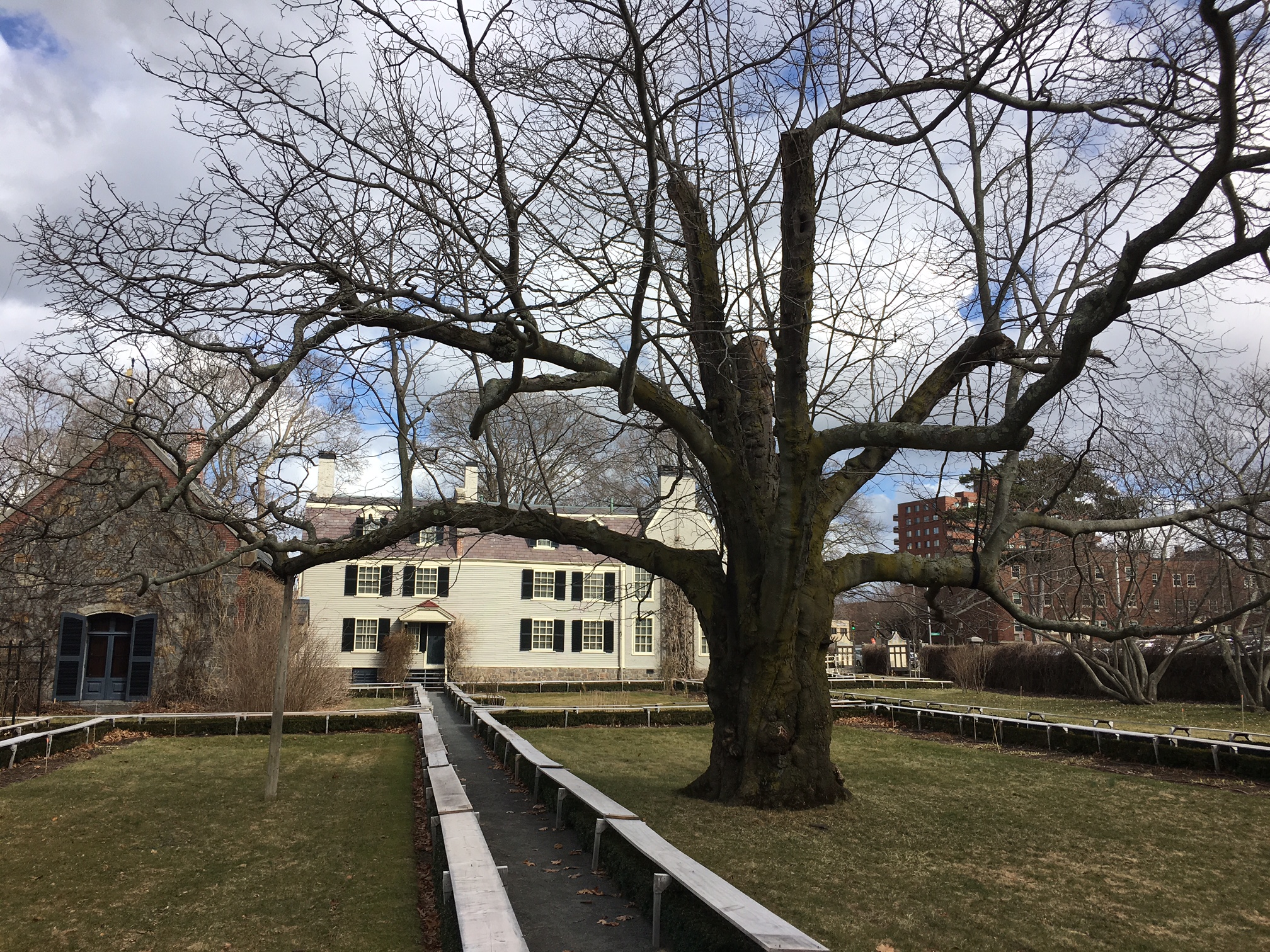A few weeks ago, I had the privilege to go to Boston to attend a professional development program at Harvard University. Arriving the weekend before the class was to begin, I had the time and ability to visit family in Quincy, Massachusetts, and to see some of the local historical sights.
On my second day, we all walked to Old House at Peace Field — the estate of former President John Adams, and after him, his son, John Quincy Adams, our sixth president. A beautiful but modest home, it sits upon several acres of subtly rolling field. As we walked the grounds on an overcast and cool day, I came around to the west side of the home, where a small courtyard hosted what was an obviously old and special tree.
I came to this conclusion because of the unique manner in which it was being cared for. On the north side of the tree, a large wooden post of seven to eight feet in height rested vertically under and pushing up one of its lowest and largest branches. It was firmly set in the ground below. On the opposite side, a fiber-covered strap wrapped neatly around a higher branch was holding up the other of the lowest branches below, where it was wrapped smartly around the large limb.
This display struck me immediately as a remarkable illustration of the ways in which we can support one another, our organizations, our communities, and those closest to us.
As I stood and considered the notion of supporting others, I also began to realize that it was two very different generations who had come to the aid of the “generation” of branches in need. The wooden post had come from another tree, quite likely from another time and even from another place. It directly supported this tree — at this time, and in this place — with the very same strength that the tree it was serving once possessed in full.
The branches on the opposite side represented a much different lineage. The lower branch that was being held up was relying upon a branch that came much later, years later — but again, it was there to support that older branch in its time of need. Moreover, this newer branch had introduced a new “technology” to accomplish the goal of supporting its predecessor. The strap, of course, was not made of wood. But like the post on the other side, it did nothing to intrude upon or force itself on or physically alter the lower branch. The post and the strap only supported the branches.
This tree is quite likely nearly 200 years old, yet it continues to thrive in no small part because of the contributions of “generations” that came before and after those most distinguished branches took their earliest stages of growth.
In many ways, this tree is an illustration of the opportunities that exist each day in which we can serve and support others. But if we seek a higher level of service throughout our communities, then we must also be wise and ready to allow opportunities for others to support us and our organizations.
And if we can accomplish each of these, then we, too, will become the examples of support that come in many forms — sometimes in what might even appear to be completely opposing methods.
The most successful chiefs and directors of our organizations understand well that post-heroic leadership develops those who serve with us in the most consistent, the most complete, and the most effective manner.
For post-heroic leaders to maximize the skills and talents of those whom they intend to succeed them, it is imperative that these skills include the ability to effectively and supportively push as well as pull. The limits of one skill or another are indeed limits not only for the future leader, but for the entire organization.
Not convinced? Imagine what might have become of that tree if the post or the strap were shorter.
This article first appeared in Campus Security Report
